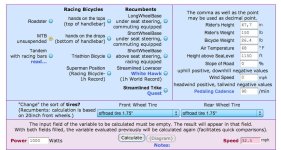TylerDurden said:
The rest of the field is mostly riding upright and aerodynamics can be regarded as more of a constant than weight can.
No it can't. Weight is a constant because it's similar for all of us and it never changes. Aerodynamic drag varies dramatically depending on speed, and is also affected by temperature, elevation, rider's size/stance/clothing, etc.
Remember that our bikes are not rocket-ships. Let's say you have a rocket-wheel like this:
...where the propellant is in the blue tank in the center of the wheel. It's emitted under pressure through the red tube, firing in the direction of the red arrow and causing the wheel to spin in the direction of the black arrow.
If you turned your bike upside-down and just let this wheel spin freely, it would spin at an extremely high rate as there's very little limiting its speed. Its acceleration would be very linear in other words -- after 10 seconds it'd be spinning at roughly twice the speed it was spinning after 5 seconds.
But turn your bike back over and try running with this, and all that weight would significantly affect acceleration, plus air/rolling resistance would limit the top speed, especially if the wheel's thrust is very low. It might not even start moving at all.
An electric motor, on the other hand, behaves totally differently. Turning the bike upside-down and running the motor, the wheel does *not* increase in speed at a linear rate; the acceleration decreases until the wheel hits a fairly low max speed. In my case at 48V, it's 360 RPM. But there's alot of thrust, so turning the bike back around and actually riding it, the maximum speed is 60% of its previous value.





